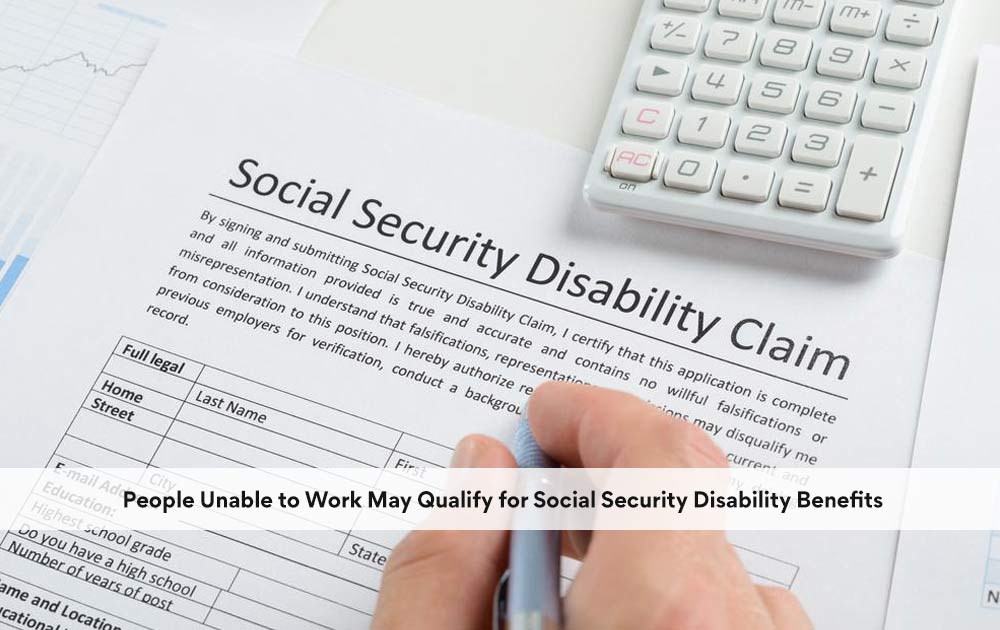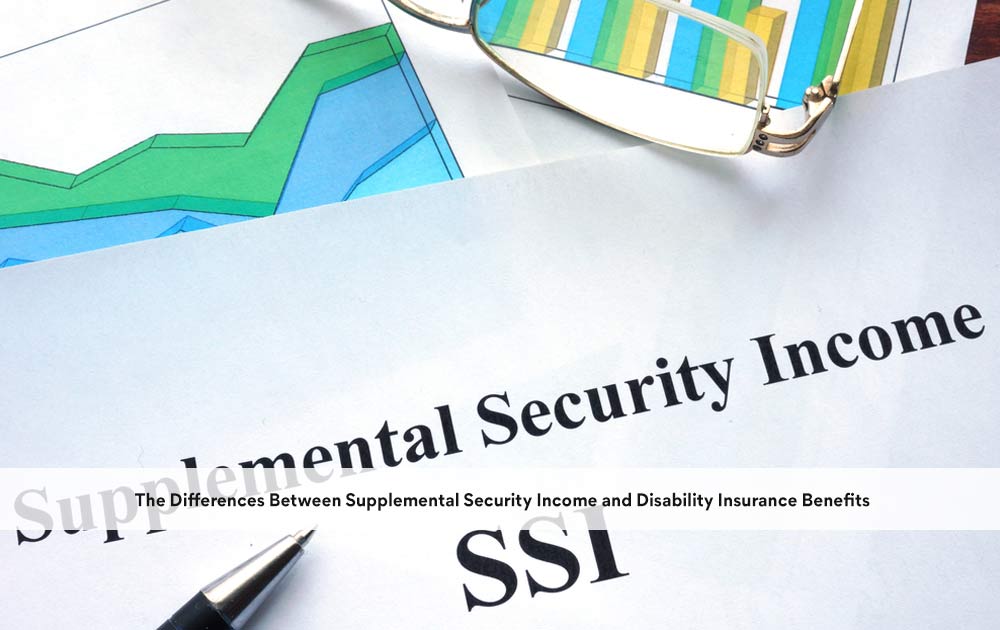Social Security and Social Security Disability are not separate names for the same program. “Social Security” refers to the Social Security retirement program, on which more than 54.7 million retired workers and certain of their family members depend for financial assistance.
“Social Security Disability” is another term used for the Social Security Disability Insurance program, which pays benefits to workers who become disabled before reaching full retirement age. Federal law prohibits you from collecting Social Security and SSDI benefits at the same time because the disability payments are equivalent to your Social Security benefits at full retirement age.
As with most questions about benefits through the Social Security Administration, the answer to the question, “Can you get SSDI and Social Security?” is not as simple as federal law not allowing it. This blog explains how disability benefits and Social Security retirement work, including what happens to SSDI when you reach full retirement age and, equally important, what “full retirement age” means. You’ll also learn about Supplemental Security Income, another disability program, the effect of retirement benefits on SSI, and dual Social Security benefits eligibility, where you could receive SSI and SSDI simultaneously.
Social Security Disability Insurance program
The Social Security Act, enacted in 1935, originally paid retirement benefits only to eligible workers. Their surviving spouses and children became eligible for benefits only after the law was amended in 1939. It was not until another amendment in 1956 created the SSDI program that disabled workers could access their benefits before reaching retirement age. Today, nearly 7.2 disabled workers receive monthly SSDI benefits.
Eligibility to the retirement and disability programs requires a work history at jobs covered by Social Security. Workers and their employers contribute to the system through the payment of Social Security payroll taxes.
A person must have worked long enough and recently enough, as measured by work credits, to qualify for benefits. Workers earn one work credit for each $1,810 in total wages or self-employment income in 2025. The amount of earnings for one credit can change annually. The maximum number of credits that can be earned in a year is four.
You need 40 work credits to be eligible for Social Security retirement benefits. However, your age when you become disabled determines the number of work credits and how recently they must be earned for SSDI eligibility. For example, a worker younger than 28 must have worked and earned credits for at least 18 months, while a 34-year-old worker needs at least three years of working and earning credits to qualify for SSDI.
Duration, or how long you must work, is only part of the work requirement. Some of the work must be recently earned. The following presents a general rule for how recently earned some work credits must be at different ages:
- Younger than 24: A worker developing a disabling medical condition before 24 years of age needs six credits earned within three years of being disabled.
- At least 24 but not yet 31 years of age: A worker needs work credits equal to half the time they worked from age 21 until the disability onset date. For instance, if you become disabled at 27, you could qualify for SSDI benefits with 12 work credits earned between ages 21 and 27.
- Ages 31 and older: It generally takes a minimum of 20 work credits earned during the 10-year period preceding the onset date of a disability for workers to qualify for SSDI.
If you have questions about the application process for SSDI benefits and whether or not you meet the work requirements, you’ll find the help you need at the Clauson Law Firm.
Besides having a work record meeting the requirements for SSDI eligibility, you must also be disabled according to the strict definition used by the Social Security Administration. According to the SSA definition, you must be unable to do substantial gainful activity because of a medically determinable physical or mental impairment that is expected to cause death or to last for at least one year.
Benefits payable through SSDI
If you qualify for SSDI, you receive monthly payments the SSA calculates using your average lifetime earnings. This is the same method used to determine Social Security retirement benefits for individuals applying for them at full retirement age.
When a person collecting SSDI benefits reaches full retirement age, the disability benefits automatically convert to retirement benefits with the next monthly payment. The monthly benefit amount typically remains the same.
You could see an increase after conversion to retirement if you received workers’ compensation benefits while also receiving disability benefits. Some individuals who receive workers’ compensation, civil service, or state disability benefits, as well as retirement benefits from state or local governments, may have their SSDI benefit payments reduced. However, the reduction does not apply to Social Security retirement, so your monthly payments may increase when SSDI converts to retirement.
What Is The Full Retirement Age?
Although you can begin receiving retirement benefits from Social Security at 62, you receive a reduced monthly benefit. The reduction can be as high as 30%, depending on your age when applying for early retirement. To get all of the monthly retirement benefits without a reduction, you need to wait until full retirement age.
Your full retirement age depends on the year you were born. For example, if you were born in 1955, it is 66 years and two months. It is age 67 if you were born in 1960 or later. A common mistake people make is confusing the retirement age with the age at which they become eligible for Medicare. Medicare benefits become available at age 65 for everyone regardless of their year of birth.
Early Social Security vs. disability benefits
The law prohibiting a person from collecting Social Security Disability and retirement benefits simultaneously also applies to benefits received upon early retirement. If you have a disability and cannot work, disability benefits may be a better option because of the reduced benefit amount you get by retiring early.
You’ll receive the same amount each month in SSDI benefits as you’d get by waiting until your full retirement age to retire. A Clauson Law disability lawyer can advise you about how to maximize your monthly benefits when deciding between early Social Security vs. disability benefits.
If you decide to take early retirement benefits before applying for SSDI, the risk is that Social Security evaluates your medical records and determines the disability began after you started receiving early retirement benefits. The result is a permanent reduction in your retirement benefits even after you reach full retirement age.
The other scenario occurs when the SSA determines that the onset date of your disability was before the date you applied for early retirement. If approved for SSDI, you may be entitled to reimbursement for up to 12 months of the difference between the reduced retirement benefits and the SSDI payments. Notice that payments cannot go back more than 12 months, so do not delay applying for disability benefits.
How Does Supplemental Security Income Work With SSDI?
Financial need rather than work history determines eligibility for SSI disability benefits. You cannot have more than limited income with financial resources or assets valued at less than $2,000 for individuals and $3,000 for couples. The disability definition used by the SSA for adults applying for SSI benefits is the same as for the SSDI program.
Although administered by the SSA, funds for SSI benefits are derived from the general fund of the U.S. Treasury, which comprises personal income, corporate, and other taxes, rather than Social Security taxes. If you qualify for SSI, the maximum monthly benefit for individuals is $967 and $1,450 for couples.
If you have a work record making you eligible for Social Security Disability or retirement benefits, you can receive them while also qualifying for SSI. The money you get each month as SSDI or retirement benefit counts as income to reduce the payment you receive from SSI.
When a person eligible for SSDI and SSI benefits reaches their full retirement age, the SSDI benefits convert to Social Security retirement. The reduction in your SSI benefits because of the income you received monthly from SSDI continues after the conversion to retirement benefits.
Survivor Benefits And Retirement
If you receive survivor benefits, which are benefits you receive as a surviving spouse, divorced spouse, child, or dependent parent of a deceased worker. The survivor benefits are based on the work history of your deceased family member.
You cannot collect Social Security benefits based on your own work history while also receiving survivor benefits. You can only receive benefits through one account. The SSA determines which benefit is higher and pays you that amount each month, whether it is SSDI or retirement payments.
Contact A Disability Lawyer At Clauson Law
The experienced disability benefits team at Clauson Law fights for the rights of people unable to work because of severe medical conditions. Our disability lawyers represent clients throughout North Carolina and the nation, providing skilled representation from applications through appeals. If you have questions about SSDI and retirement benefits, contact Clauson Law for a free consultation.


